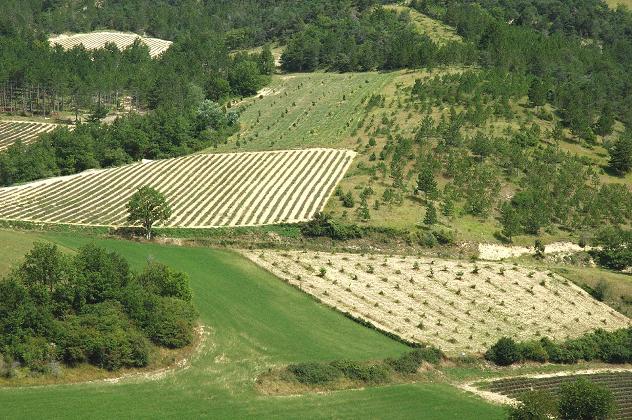 Biodiversity is the basis for agricultural production. On the one hand it is the origin of all crops and domestic livestock and the variety within them. On the other hand, components of wild biodiversity in agricultural and associated landscapes provide and maintain ecosystem services that are essential to agricultural production (e.g. pollination).
Biodiversity is the basis for agricultural production. On the one hand it is the origin of all crops and domestic livestock and the variety within them. On the other hand, components of wild biodiversity in agricultural and associated landscapes provide and maintain ecosystem services that are essential to agricultural production (e.g. pollination).
Since nearly half of the EU’s land territory is farmed, this form of land use is in no doubt the main component of much of the semi-natural environment and the multifunctional landscapes within the European Union. Farming and biodiversity are interdependent and this is increasingly recognized by European policy makers. It is recognized that much of the negative impacts of agricultural practices on the environment and biodiversity, as witnessed over the past century, can no longer be tolerated and that a transition towards a sustainable agriculture is required for the sector to survive.
The realization that agriculture has to become more sustainable is incorporated in policy instruments from national to global level. Knowledge is being increasingly accumulated on how biodiversity can be mobilized to make agriculture sustainable. Throughout Europe, farmers, researchers, policymakers and other stakeholders are implementing various forms of agrobiodiversity. At present, this practical experience is extremely fragmented and barely accessible. The ‘European Learning Network on Functional AgroBiodiversity’ aims to change this.
Despite the recent efforts for more pro-biodiversity measures in the agricultural sector, the notion of ‘functional agrobiodiversity’ is not widely adopted or implemented in Europe. In fact, published examples are few in numbers. The European Learning Network on Functional AgroBiodiversity defines functional agrobiodiversity as follows:
Biodiversity on the scale of agricultural fields or landscapes, which provides ecosystem services that support sustainable agricultural production and can also have a positive spin-off to the regional and global environment and society as a whole.
Functional AgroBiodiversity provides regulating, provisioning and cultural ecosystem services that are essential for human well-being. Positive synergies often exist among regulating, provisioning and cultural services and with biodiversity conservation as can be seen from this conceptual diagram. The green area in the diagram highlights the core focus of the European Learning Network. The red area highlights positive spin-off of Functional AgroBiodiversity to the local (e.g. water quality, recreation) and global environment (e.g climate change) and society as a whole. The graph is adapted from the Millennium Ecosystem Assessment (2005). Supporting services are not included as they are not directly used by the people.
Source: http://eln-fab.eu/index.php?do=page&lang=en&id=61

